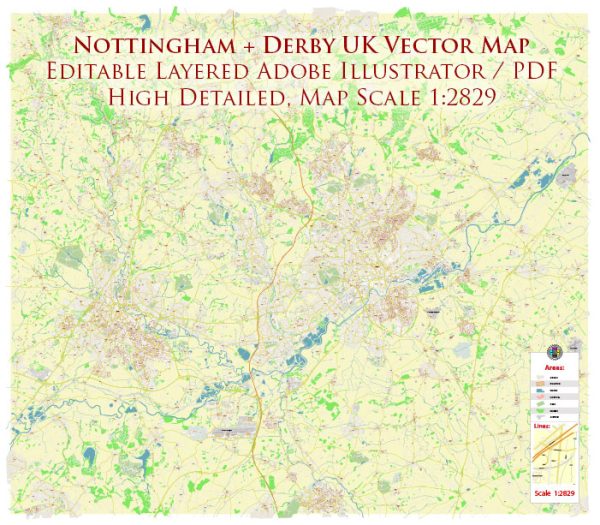Nottingham and Derby are two historic cities in the East Midlands region of the United Kingdom, both of which have rich histories that date back many centuries. Here’s a brief overview of the history of these two cities:
Nottingham:
- Medieval Roots: Nottingham has a history dating back to the medieval period. Its name is often associated with Sherwood Forest, which was famously home to the legendary outlaw Robin Hood. While the historicity of Robin Hood is debated, the city has embraced the legend as part of its cultural heritage.
- Industrial Revolution: Nottingham played a significant role in the Industrial Revolution. The city became known for its lace-making and textile industries. The Lace Market area of Nottingham is a reminder of the city’s textile heritage and features well-preserved historic buildings.
- Castle: Nottingham Castle is a prominent landmark with a history dating back to the medieval era. It has served various purposes throughout the centuries, including as a royal palace and a prison. The castle grounds offer panoramic views of the city.
- Caves: Nottingham is known for its extensive system of sandstone caves beneath the city. These caves have been used for various purposes, including as homes, breweries, and storage facilities.
- Modern Times: Today, Nottingham is a vibrant city with a diverse cultural scene. It’s home to two universities and is known for its historical and modern architecture. The city also has a rich literary and artistic heritage.
Derby:
- Roman Origins: Derby’s history can be traced back to Roman times when it was known as “Derventio.” It served as a significant Roman garrison town.
- Industrial Revolution: Like Nottingham, Derby played a crucial role in the Industrial Revolution. The city was the birthplace of the industrialist and inventor Sir Richard Arkwright, who is known for developing the spinning frame, a key innovation in textile manufacturing.
- Railway Heritage: Derby is often referred to as the “Birthplace of the Railway” because it was the location of the world’s first factory for manufacturing locomotives, built by George Stephenson. The city has a strong connection to the railway industry.
- Cultural and Architectural Landmarks: Derby boasts cultural attractions like the Derby Museum and Art Gallery, showcasing a diverse range of art and artifacts. The city’s Cathedral Quarter is home to historic buildings and landmarks.
- Modern City: Today, Derby is a thriving city known for its manufacturing industries, particularly aerospace and automobile manufacturing. It is home to the University of Derby and has a growing cultural scene, with theaters, music venues, and various annual events.
Both Nottingham and Derby have evolved over the centuries, with their historical roots still visible in the form of historic buildings, museums, and cultural traditions. They continue to play important roles in the East Midlands and the wider UK.


 Author: Kirill Shrayber, Ph.D.
Author: Kirill Shrayber, Ph.D.